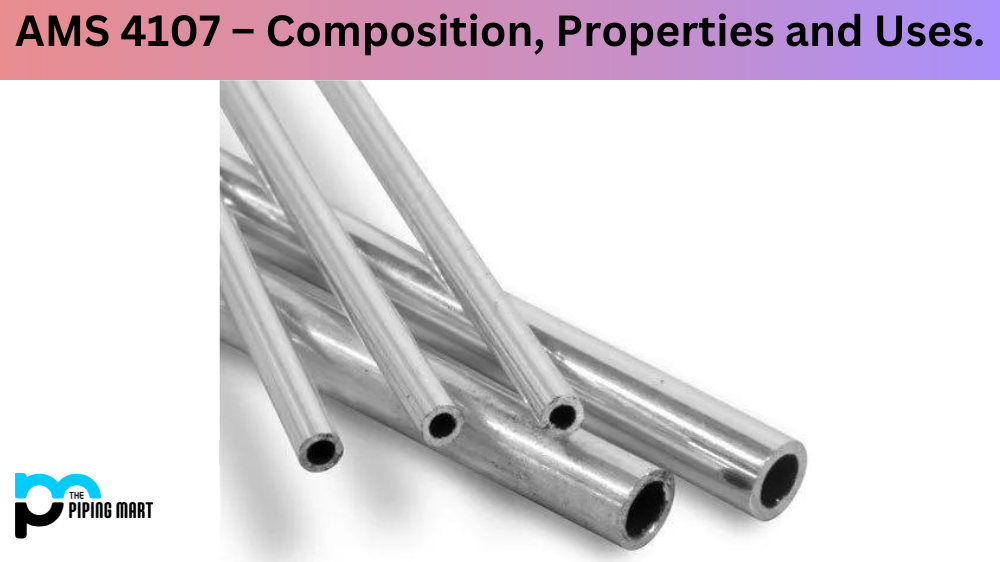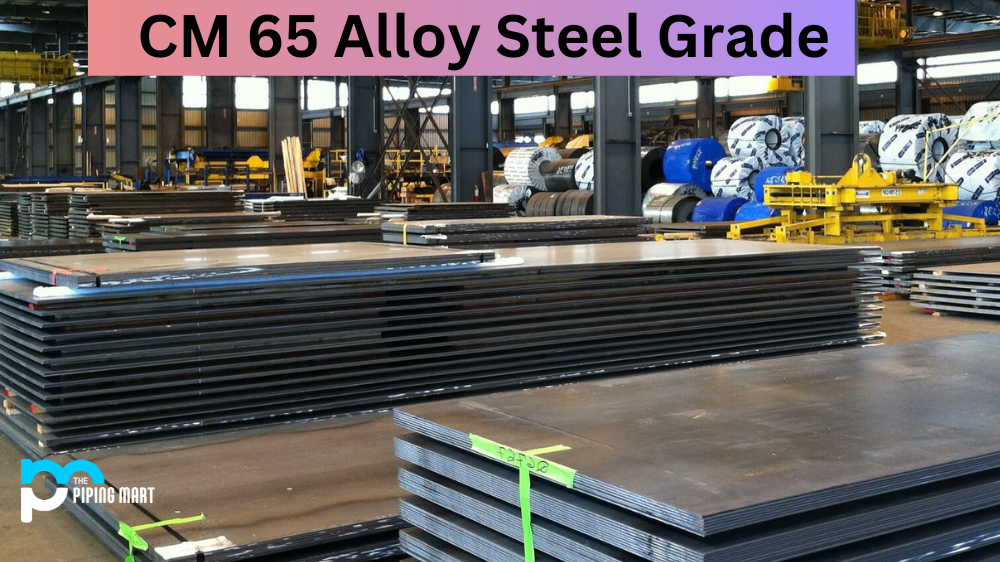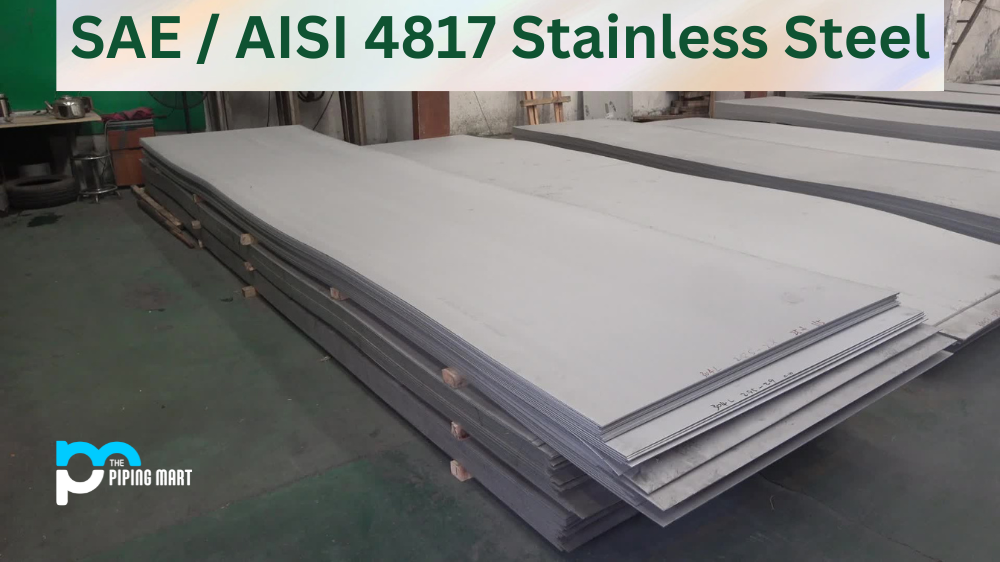SAE – AMS 6348 is a type of steel widely used in various industries such as aerospace, defence, and automotive. Its unique properties make it a popular choice for critical applications requiring high strength, durability, and corrosion resistance. This article will explore the composition, physical and mechanical properties, uses, hardness, and heat treatment of AMS 6348 material.
What is AMS 6348?
AMS 6348 (also known as SAE – AISI 4130 Alloy Steel) metal is an aerospace-grade alloy that is highly sought after for its exceptional strength-to-weight ratio and resistance to corrosion. This metal primarily comprises nickel and chromium, making it ideal for use in extremely demanding environments where durability is key. Whether used in the construction of aircraft, spacecraft, or other high-performance machinery, AMS6348 metal has the ability to withstand intense heat, pressure, and stress while maintaining its structural integrity. With such impressive qualities, it’s no wonder that AMS6348 metal is considered a top choice for industries that require the very best in both performance and reliability.
What Form is AMS 6348 Available at Piping Mart?
- Alloy Steel AISI 4130 Bars
AMS 6348 Composition
AMS 6348 sheet is a low-alloy steel that contains Chromium (Cr), Nickel (Ni), Molybdenum (Mo), and Vanadium (V) as its primary alloying elements. The percentage of each element in its composition varies slightly depending on the supplier but typically ranges from 0.35-0.45% for Chromium, 1.5-2.0% for Nickel, 0.2-0.3% for Molybdenum, and 0.08-0.12% for Vanadium. It also has a Carbon (C) content of 0.38-0.43%. The steel’s chemical composition contributes to its unique properties, including high strength, toughness, and resistance to wear and tear.
| C | Si | Mn | P | S | Cr | Mo | Fe | |
|---|---|---|---|---|---|---|---|---|
| Min | 0.28 | 0.15 | 0.40 | • | • | 0.80 | 0.15 | 0.00 |
| Max | 0.33 | 0.35 | 0.60 | 0.035 | 0.040 | 1.10 | 0.25 | 0.00 |
AMS 6348 Physical Properties
AMS 6348 has a density of approximately 7.85 g/cm³, which is similar to most low alloy steels. Its melting point is around 1420-1460°C, and it has a thermal expansion coefficient of 11.7 µm/m°C. The steel has a Young’s Modulus of 205 GPa, which means it is quite rigid and can withstand large loads without deforming. Its thermal conductivity is around 54 W/m.K, while its electrical resistivity is approximately 0.064 ohm.m.
| Properties | Metric | Imperial |
|---|---|---|
| Density | 7.85 g/cm3 | 0.284 lb/in³ |
| Melting point | 1432°C | 2610°F |
AMS 6348 Mechanical Properties
AMS 6348 steel bars has exceptional mechanical properties that make it suitable for high-stress applications. It has a tensile strength of around 1350 MPa, which is higher than most steels. Its yield strength is approximately 1100 MPa, while its elongation at break is around 15%. The steel has excellent fatigue resistance and can withstand repeated loading and unloading cycles without cracking or breaking. Its toughness and ductility are also impressive, as it can absorb significant impact without fracturing.
| Properties | Metric |
| Tensile strength, ultimate | 560 MPa |
| Tensile strength, yield | 460 MPa |
| Modulus of elasticity | 190-210 GPa |
| Bulk modulus (Typical for steel) | 140 GPa |
| Shear modulus (Typical for steel) | 80 GPa |
| Poissons ratio | 0.27-0.30 |
| Elongation at break (in 50 mm) | 21.50% |
| Reduction of area | 59.6 |
| Hardness, Brinell | 217 |
| Hardness, Knoop (Converted from Brinell hardness) | 240 |
| Hardness, Rockwell B (Converted from Brinell hardness) | 95 |
| Hardness, Rockwell C (Converted from Brinell hardness, value below normal HRC range, for comparison purposes only.) | 17 |
| Hardness, Vickers (Converted from Brinell hardness) | 228 |
| Machinability (Annealed and cold drawn. Based on 100% machinability for AISI 1212 steel.) | 70 |
AMS 6348 Equivalents
| AMS 6348 | AMS 6371 | ASTM A331 | ASTM A829 | DIN 1.7218 |
| AMS 6350 | AMS 6373 | ASTM A506 | MIL S-18729 | UNI 25 CrMo 4 |
| AMS 6351 | AMS 6374 | ASTM A507 | MIL S-6758 | JIS SCCrM 1 |
| AMS 6360 | AMS 6528 | ASTM A513 | SAE J1397 | JIS SCM 2 |
| AMS 6361 | AMS 7496 | ASTM A519 | SAE J404 | SS 2225 |
| AMS 6362 | ASTM A29 | ASTM A646 | SAE J412 | B.S. CDS 110 |
| AMS 6370 | ASTM A322 | ASTM A752 | AFNOR 25 CD 4 (S) | SAE J770 |
AMS 6365 Specifications
| Country | USA | BS | BS | Japan |
| Standard | ASTM A29 | EN 10250/EN10083 | BS 970 | JIS G4105 |
| Grades | 4130 | 25CrMo4/1.7218 | 708A25/708M25 | SCM430 |
AMS 6348 Uses
AMS 6348 steel is a versatile steel that is commonly used in critical applications, particularly in the aerospace, defence, and automotive industries. It is often used to manufacture aircraft landing gear components, rocket motor casings, missile components, and drive shafts. The steel’s unique properties make it ideal for applications that require high strength, durability, and resistance to wear.
AMS 6348 Hardness
AMS 6348 is a hardened steel, and its hardness can vary depending on its heat treatment. Its annealed state has a hardness of around 229 Brinell (HB). However, after it has been heat-treated, its hardness can increase up to 47 HRC (Rockwell hardness scale). This increased hardness makes it an ideal choice for applications that require a material that can withstand wear and tear while maintaining its strength.
AMS 6348 Heat treatment
AMS 6348 wire can undergo various heat treatment processes to achieve the desired mechanical and physical properties. The most common heat treatment processes for this steel include quenching and tempering. Quenching involves rapidly cooling the steel from a high temperature to a low temperature to improve its hardness, while tempering involves heating the quenched steel to a lower temperature to improve its ductility and toughness. Other heat treatment processes include annealing, normalizing, and stress relieving.
Conclusion:
AMS 6348 material is a low alloy steel that possesses exceptional properties that make it ideal for high-stress applications. Its unique composition, physical and mechanical properties, hardness, and heat treatment attributes contribute to its wide use in the aerospace, defence, and automotive industries. Understanding the various properties and applications of AMS 6348 can help manufacturers and engineers make informed decisions when selecting materials for critical applications.

Abhishek is a seasoned blogger and industry expert, sharing his insights and knowledge on various topics. With his research, Abhishek offers valuable insights and tips for professionals and enthusiasts. Follow him for expert advice on the latest trends and developments in the metal industry.




